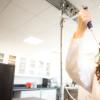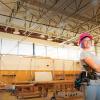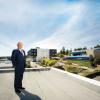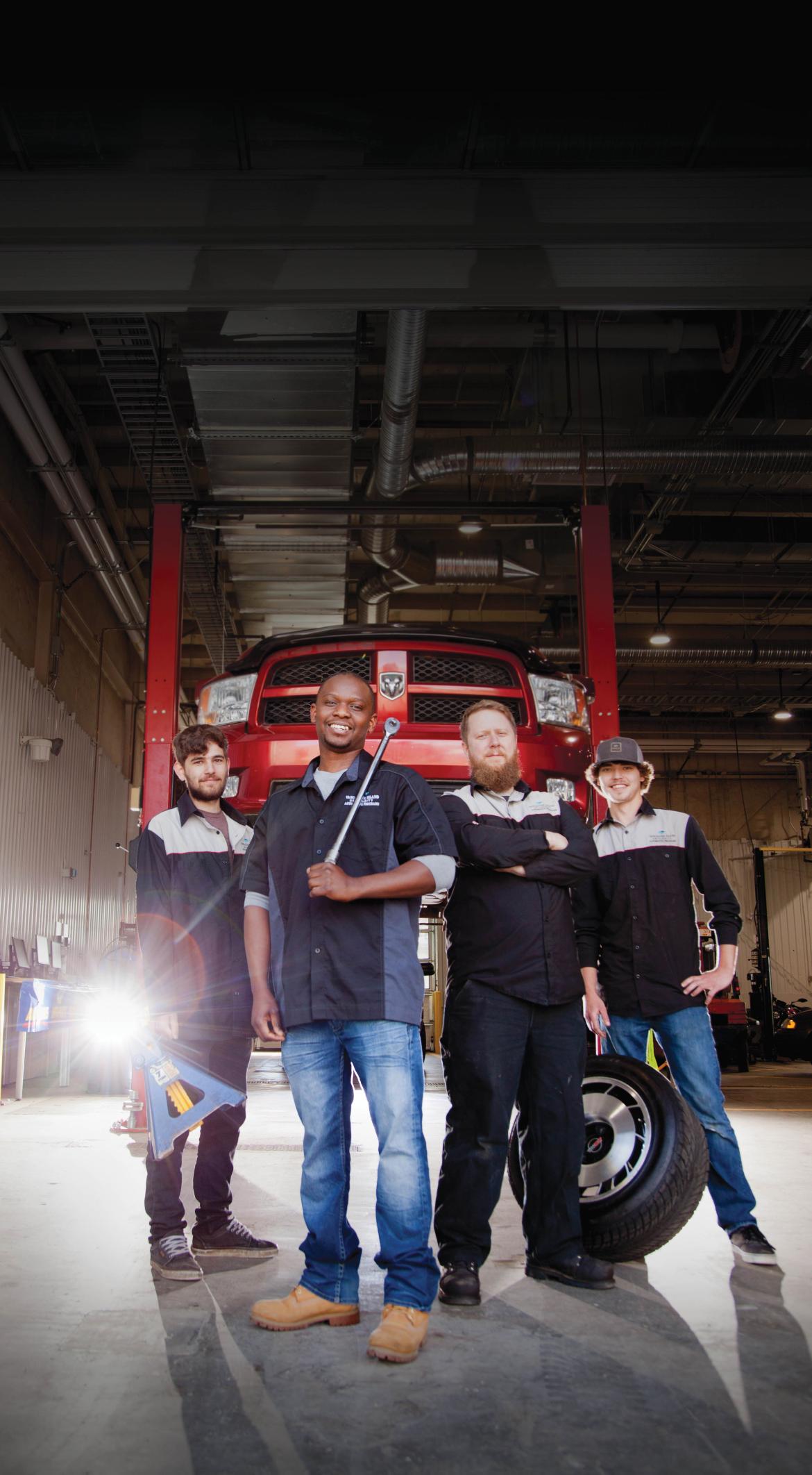
From left to right: Automotive apprenticeship students Brendan Overeem, Sibisiso John, Chad Conley and Kyle Fellowfield.
October 17, 2018 - 11:15am
By Jenn McGarrigle
An overhaul of VIU’s Automotive building is having a huge impact on how students in this technology-intensive trade learn. Part of the federal and provincial governments’ investments in VIU, the renovations are helping the institution meet the demand for skilled workers and ensure students are prepared to start work as automotive service technicians.
Trevor Rea-Stewart has noticed a huge difference in the way learning takes place in Vancouver Island University’s Automotive building since renovations were completed last fall.
“It’s much more open now. Before, the instructors were great, but it was obvious the facility was old and needed lots of love,” says the fourth-year automotive apprentice student. “It makes me feel like the community cares about this place. The auto industry employs a lot of people in the province, so having a really well-built facility shows that they think it’s important.”
The renovations are part of the $20-million Marine, Automotive and Trades Complex expansion and redevelopment project announced in December 2016 by the federal and provincial governments. The project also includes a new building for the Carpentry program; renovations to the Heavy Mechanical building to add an LNG/CNG bay; and moving the Motorcycle and Marine Technician program next door to take advantage of the similar technology needs the two programs have.
The Automotive building renovations include a 225m2 addition with a larger tool crib and an apprenticeship lab; a renovated customer service area designed to look just like a real dealership; a reconfigured shop area that now fits up to 24 vehicles compared to 16 in the former layout; and renovated classroom spaces to promote more dynamic learning opportunities.
“It’s a whole new shop inside,” says Dean Cadieux, Automotive Program Chair. “The building was built in 1972 and the general consensus was it had to be replaced, but the structure is still good, so they kept that and rebuilt everything else to more closely mimic the layout of a typical dealership shop. We treat the program like a business so students get realistic training in a facility similar to what they would find in the workforce.”
The renovations include a new lab for apprentice students that is separate from the main shop, where the foundation students are trained. The 10-month foundation program prepares students to find work as an automotive apprentice or as a trainee parts person or service advisor, and the apprenticeship program includes four levels of technical training for practicing automotive service technicians who are working towards Red Seal certification.
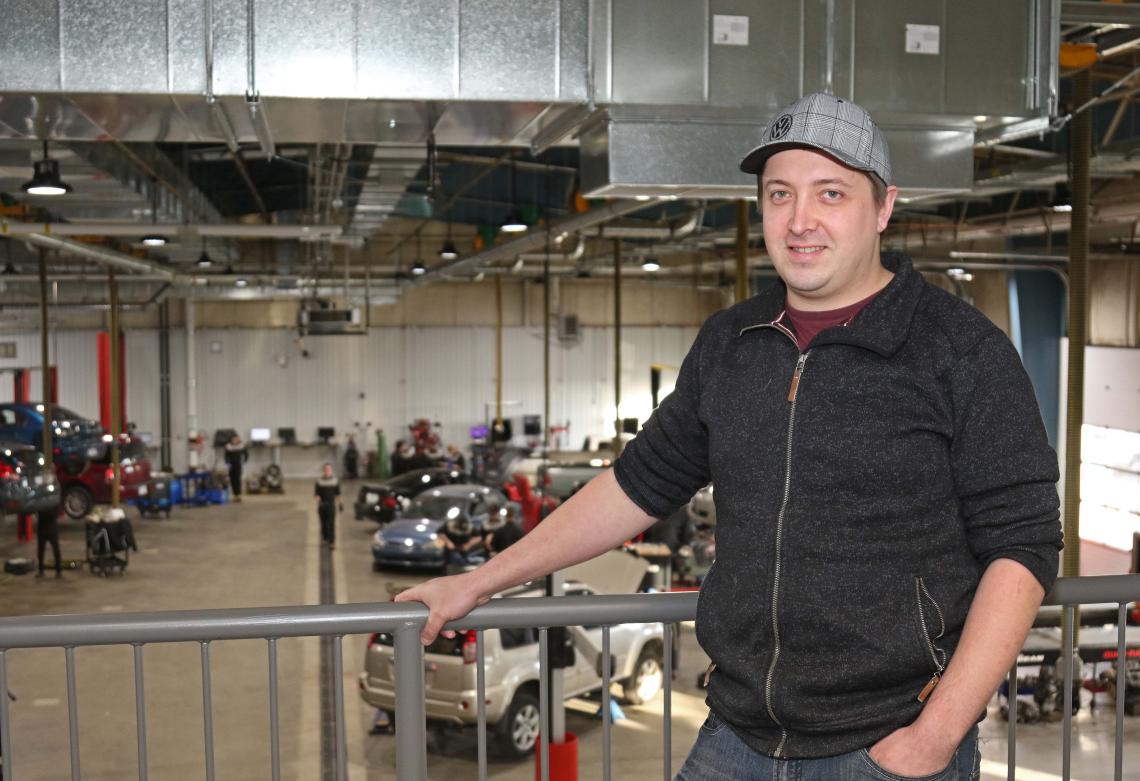 “Before, the apprentice students were kind of stuffed in at the end of the classroom with the foundation students,” says Rea-Stewart. “Having our own space is important because our training is much more specialized than what the foundation students are learning, so it allows us to focus on our own topics. There’s a lot to learn in the trade — new cars have a lot of technology. Thanks to the renovations, everything is laid out a lot better too — for example, the tool crib is more centrally located so it’s easier to access.”
“Before, the apprentice students were kind of stuffed in at the end of the classroom with the foundation students,” says Rea-Stewart. “Having our own space is important because our training is much more specialized than what the foundation students are learning, so it allows us to focus on our own topics. There’s a lot to learn in the trade — new cars have a lot of technology. Thanks to the renovations, everything is laid out a lot better too — for example, the tool crib is more centrally located so it’s easier to access.”
On top of an improved learning environment, the new configuration and extra space will allow the program to add more students, which Rea-Stewart says will help future students get access to training more quickly — he was on a wait list for two years before getting into the program.
Cadieux says up until now capacity was one class of 36 foundation students and 96 apprenticeship students per year. Now the program could add an extra foundation class and an extra apprenticeship class of 16 students.
“Our apprenticeship classes are booked more than two years ahead,” he says. “Before our students finish the foundation program, 65 per cent of them have already found work. We are fielding calls weekly from businesses looking for technicians.”
Employers are also excited about the changes. Keith Ladouceur, Fixed Operations Manager for GAIN Automotive Group, which oversees the BMW, Mercedes Benz and Subaru dealerships in Nanaimo, says local dealerships are dependent on the workforce VIU produces.
“The automotive industry has changed so rapidly in the last 20 years — the complexities of the systems technicians are dealing with now is staggering,” says Ladouceur, who is also chair of the VIU Automotive Program Advisory Committee, a group of industry professionals that works with VIU to ensure the program remains relevant to industry needs. “This type of work is now dependent on continued learning.”
Not only is education more important than ever, but the industry is experiencing a shortage of trained workers, he adds.
“I’m excited about the increased volume of students the VIU program will be able to handle because we are dealing with a shortage in the workforce,” says Ladouceur. “There will be jobs for students equipped to deal with the realities of the automotive trades. Graduates from the VIU Foundation program and current apprentices have been well-prepared for that new reality.”
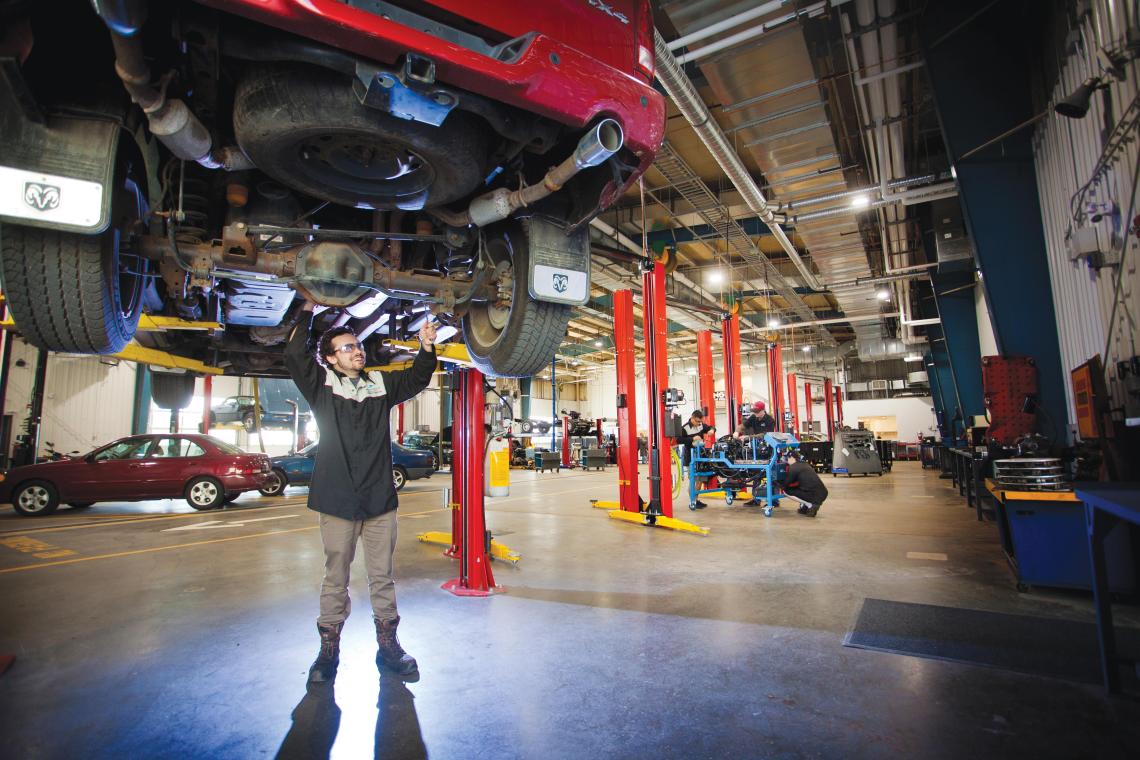
Sidebar: Construction at VIU
In late 2016 and early 2017, the provincial and federal governments announced funding for three major construction projects at VIU’s Nanaimo Campus – the Marine, Automotive and Trades Complex, the Health and Science Centre and a District Geo-Exchange Energy System. Funding for the project comes through the federal government’s Post-Secondary Institutions Strategic Investment Fund, the provincial government and VIU community partners. The majority of renovations to the Automotive building – part of the Marine, Automotive and Trades Complex redevelopment and expansion project – wrapped up in the fall of 2017. The other components of the projects funded by the government – the new Trades Complex, District Geo-Exchange Energy System and Health and Science Centre – opened in September 2018.
Sidebar: Automotive by the Numbers
1972 – Year the Automotive building first opened
225 m2
Additional space added to the Automotive building
24
Number of vehicle bays the shop has, up from 16
*This article originally appeared in the Fall 2018 edition of VIU Magazine. Check out more stories on the VIU Magazine webpage.
Tags: Automotive | VIU Magazine | VIUBuilds

